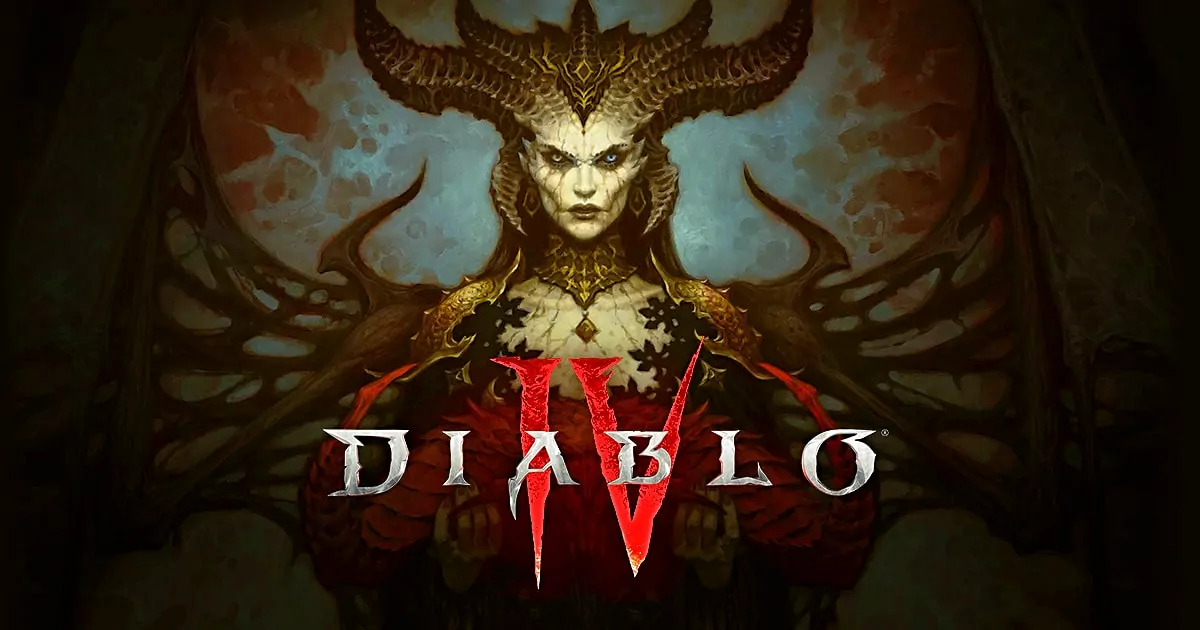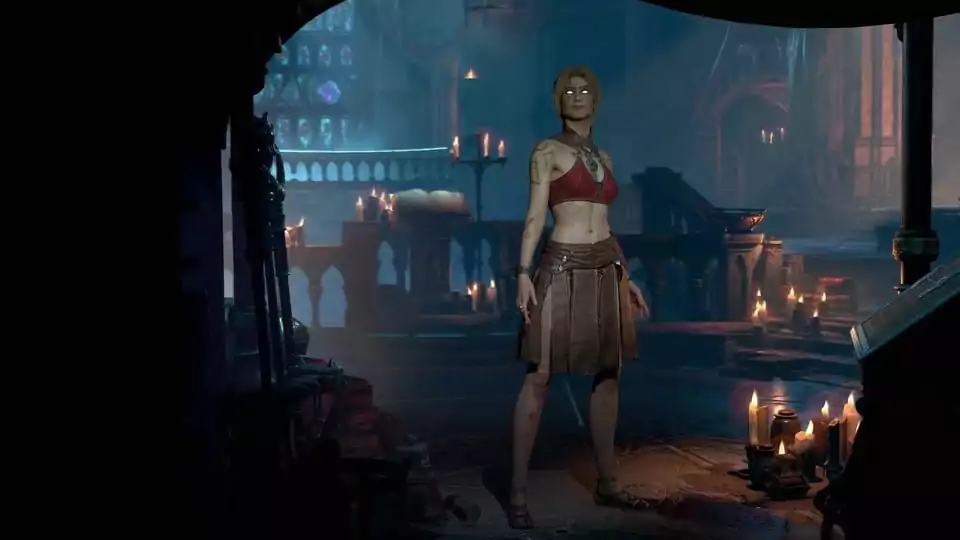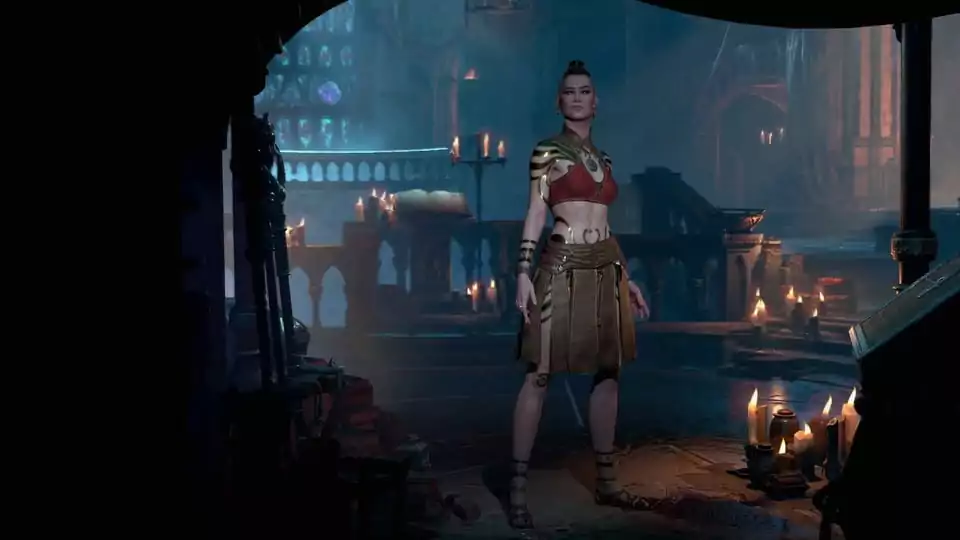Classes, skills, release, endgame, co-op, PvP and more: we round up everything you need to know about Diablo 4 gameplay right now.
A lot has happened in Diablo 4 since it was announced at Blizzcon 2019. The developers release regular quarterly updates in which they address active development and show what feedback they have implemented. However, many details, especially in the game mechanics, could still change until the final release.
We always summarise the latest information on the action role-playing game in this article and will revise the article as soon as something has changed in a mechanic. Whether it”s information about the classes, abilities, the endgame or multiplayer, you”ll always be up to date here.
Table of Contents
Release: When is it coming out?
Blizzard has not yet announced an exact release date for Diablo 4, but it has at least set an initial framework. At the big Microsoft showcase on June 12, 2022 the year 2023 was made official as the release year
In fact, Microsoft advertised that all the games at this showcase would be released in the next 12 months. That would mean Diablo 4 will definitely be released in the first half of the year – unless something interferes.
All classes: Which characters are known?
In the meantime, all five initial classes are known and have received their own gameplay videos. More classes will most likely not be available at release. However, it is possible that new classes will be integrated into the game after release.
- The Barbarian
- The Sorceress
- The Druid
- The Huntress
- The Necromancer
How do the classes play?
Once again, each class seems to be very different from the others in Diablo 4. At Blizzcon 2019, we were already able to try out all three known classes. However, there were no unexpected surprises.
The barbarian remains a brutal melee fighter who ploughs through his enemies with various weapons. The sorceress is a ranged fighter who shoots with ice and fire or even summons meteorites. The druid, on the other hand, relies on a healthy mixture. He casts his nature spells from afar, but can also shine in close combat in bear or wolf form.
Only the huntress is even more multi-faceted. She can deal out daggers and swords in close combat, uses bows and crossbows for ranged combat, has powerful shadow magic and can also lay traps. In addition, the Rogue is supposed to be extremely mobile, which was always a great advantage in Diablo.
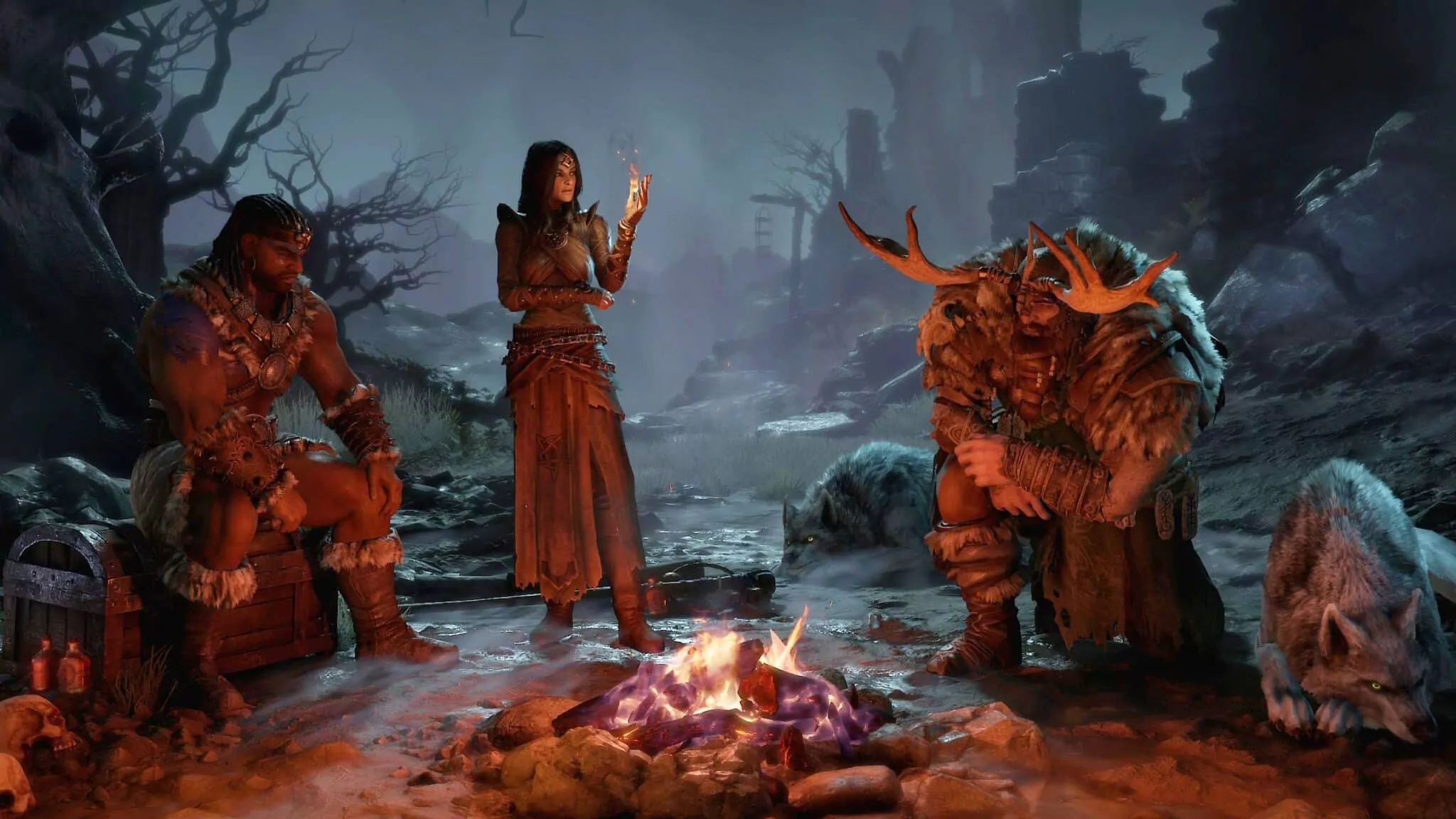
Unique class abilities:
Completely new are the unique class mechanics Blizzard has come up with. The barbarian, for example, can switch fluidly between different weapons in battle and equip up to four different items with them. The sorceress can also equip her active spells as a passive effect. Then meteorites are no longer actively summoned, but regularly strike around them.
The huntress even gets three different abilities. However, players always have to choose one of them. The choices are combo points, weak points or the Shadowrealm. Combo points can strengthen certain finishers, weak points make enemies particularly vulnerable for a short time and the Shadowrealm is another dimension into which your huntress can escape.
The huntress also unlocks her class abilities by completing tasks for different factions. Whether this also applies to the other classes is still unclear.
Skills: How do the talent tree and skills work?
The skill and level system is one of the most important mechanics of any Diablo. The third part, for example, alienated a few long-time fans who would have preferred to see a system as complex as Diablo 2. With proper skill trees for each class and upgradeable attributes.
Diablo 4 wants to do things differently without sacrificing the accessibility of Diablo 3. Originally, the skill system looked very different when it was announced, but Blizzard has since reworked the whole thing.
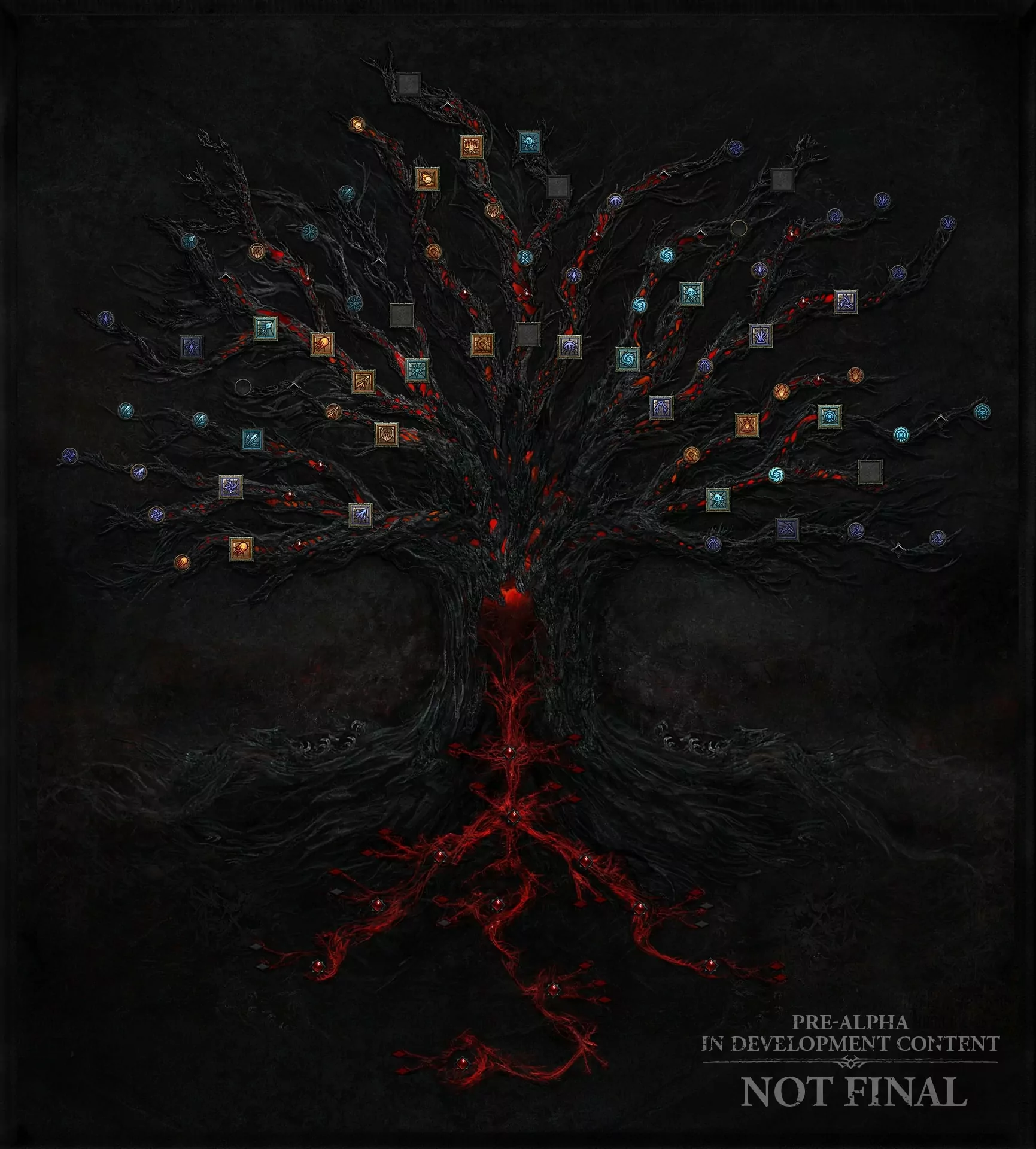
There is a skill tree:
Originally, only passive skills were supposed to get a small talent tree. But now Diablo 4 has a real tree where all skills of a class can be found. All active abilities hang in the treetop here, as well as additional functions for them.
You can also unlock passive points here. As soon as you have gained a passive point in the crown, you can spend the point in the roots for passive effects.
The Paragon Board:
From level 50 onwards, the Paragon board is open to you in Diablo 4. Unlike in D3, this is a hugely complex system that allows you to specialise your build even further. The boards consist of different tiles with different strengths, and it is also possible to unlock more boards for new legendary buffs. Between the tiles there is sometimes space for glyphs, which you can find while playing. Glyphs then strengthen all tiles around them. The Paragon board promises to be similar in size to the skill trees in Path of Exile!
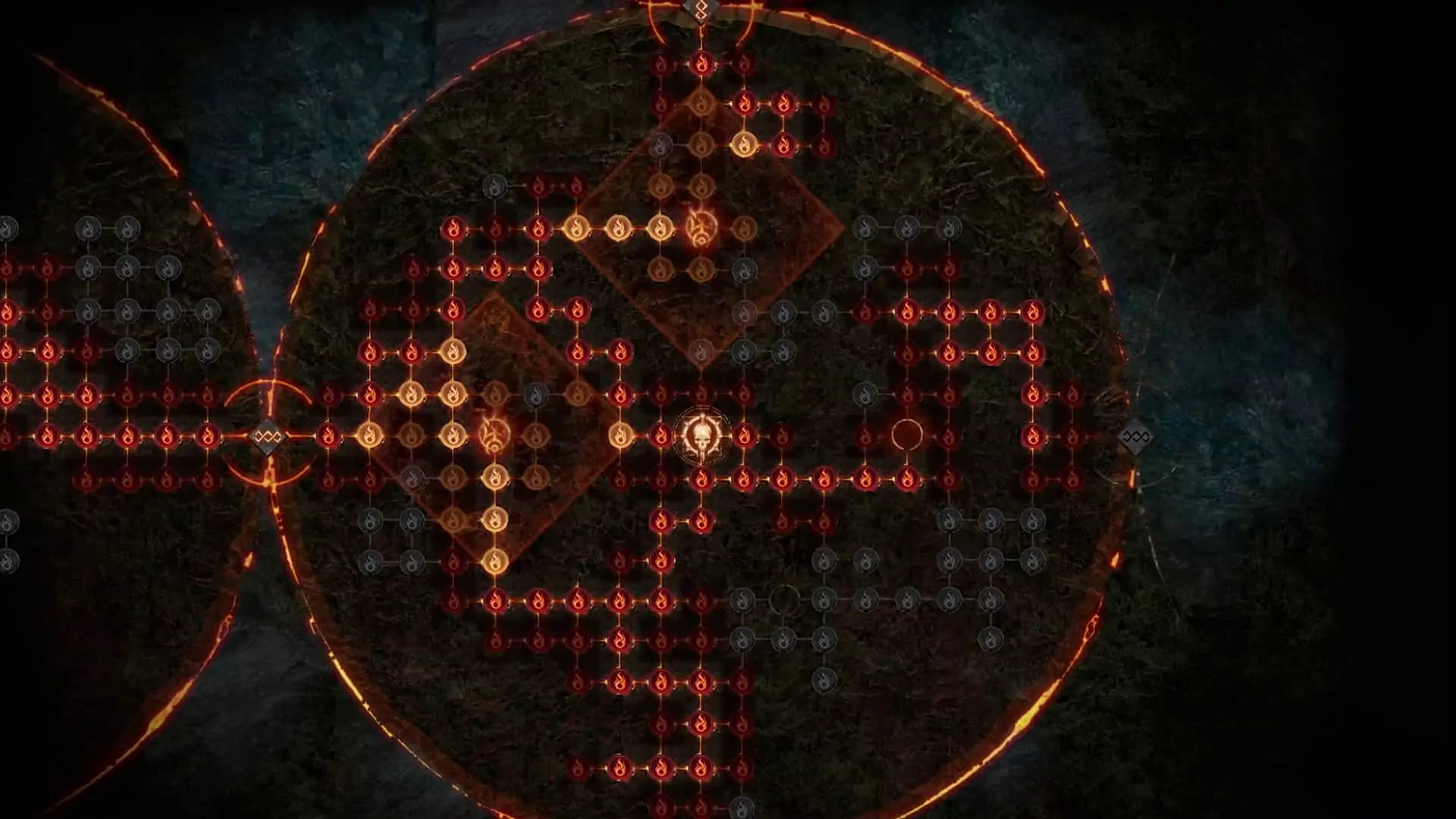
Decisions:
In Diablo 3, you couldn”t decide which ability to get and when. In Diablo 4, you have to plan your route through the skill tree. During the main game, you only get enough points to unlock about 30 to 40 percent of the skill tree. You can reallocate your skill points indefinitely, but this costs something and becomes more expensive the more skills you have already unlocked.
Level-Up: Are there attributes again?
Yes! Blizzard no longer wants your hero”s strength to be determined primarily by their items. In Diablo 3, for example, most end-game builds are still hung on the different sets that can be used to improve skills.
Diablo 4, meanwhile, brings back the primary attributes. Our hero should also refine his own abilities during his fight against the underworld and not just find better loot. Therefore, when you level up, you get points that you can freely spend on strength, intelligence, dexterity or willpower. However, each attribute is supposed to be useful for each class. For the barbarian, strength improves damage and willpower increases anger production, while intelligence increases the slayer”s crit chance and dexterity increases her damage.
If an attribute has been especially high-skilled, you can also use it to trigger additional side effects for some skills.
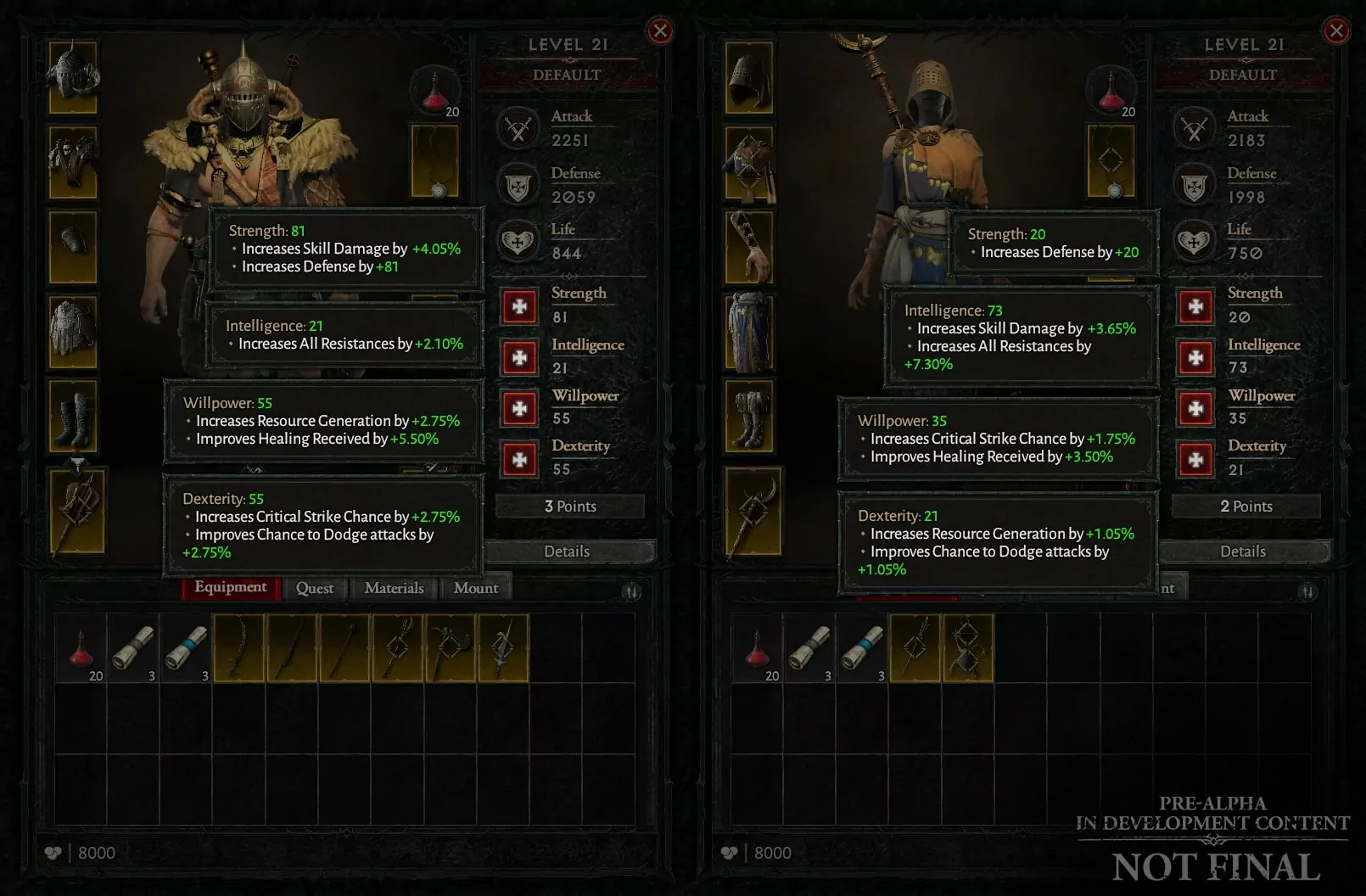
Loot: How does the item system work?
Besides the skills and character classes, every Diablo also includes the wonderful loot spiral. After all, a large part of the motivation of every hack&slay is fed by the search for better and better equipment. As with the skills, a lot has happened here since the 2019 announcement.
Originally, Blizzard introduced a new power system, whereby items get different effects the greater your angel, demon or ancestor power is. In the end, however, this system was removed again.
The quality of the items:
All items in Diablo 4 are divided into five quality levels. In addition to the usual grey items, you will later get magic items in blue or rare items in yellow. Even more powerful are the orange-coloured legendary items and the returned unique items.
Legendary and unique:
Magical and rare items not only have better stats, but also additional affixes. Legendary weapons and armour, however, have a legendary property instead of a fifth affix. These are particularly powerful bonuses. In addition, as in Diablo 2, there are again unique items. These objects always have fixed properties and are not randomly generated.
Set items:
Blizzard has not yet decided what to do with sets. In Diablo 3, these collections of items were still significantly responsible for the builds, in Diablo 4 they are supposed to play a smaller role. It is also possible that there will be no sets at all. But that is not yet certain. At the moment it seems rather unlikely that sets will not be included in some form. If they are, however, they will probably be smaller and in no way dictate a build for the players.
Editor: Can I customise my character?
For the first time in Diablo history, you have a lot of creative freedom to customise your hero”s appearance. Although there are no sliders like in Skyrim, you can choose between different face and skin types and determine the gender. In addition, you can put lots of tattoos on your character, change the colour of his eyes or dye his hair. The armour can also be adapted optically and, as in Diablo 3, can be completely recoloured.
By the way, this does not only apply to your hero. You can also customise your faithful steed. You determine the colour of the coat, armour, saddle and even which horseshoes are attached.
Endgame: What happens after the story?
For the endgame, Diablo 4 is inspired by Path of Exile and relies on key dungeons instead of the previous rifts. Thanks to special dungeon properties, they are supposed to offer significantly more varied and flexible challenges and are determined by keys.
Open World: What is the Shared World all about?
The Open World: For the first time, Sanctuary in Diablo is not divided into individual zones. You can seamlessly explore the entire game world. You can travel through regions such as the burning desert of Kehjistan, the forests of Scosglen, the wild dry steppes, the rugged cliffs of the Shattered Peaks and the blighted swamplands of Hawezar without loading screens.
An exciting detail: Items in Diablo 4 adapt to the region in which they are found. So if you”re riding through the desert in the Open World and find a leather helmet, it will look different than it does high in the north.
Mounts: So that you don”t have to completely traverse the open world on foot, you can also ride a horse. This is also a novelty in the series. However, the horses only serve to speed up your progress. If it comes to a fight, you can dismount with a powerful attack or you will be thrown off after a hit.
Camp: Since an extremely large number of people died during the events of Reaper of Souls, there are many abandoned structures in the open world. Monsters, demons or bandits have taken up residence here. Players can march in here and flatten everything. Then people move back in and open up new waypoints and marketplaces. In this way, players should get the feeling that they are changing the game world through their actions.
The Shared World: Diablo 4 is inspired by games like Destiny 2 when it comes to the shared game world. You meet other players in an open world like in an MMO, but not in the dungeons or story missions. You can also encounter so-called world bosses. These are huge enemies that can only be defeated by a large group of players.
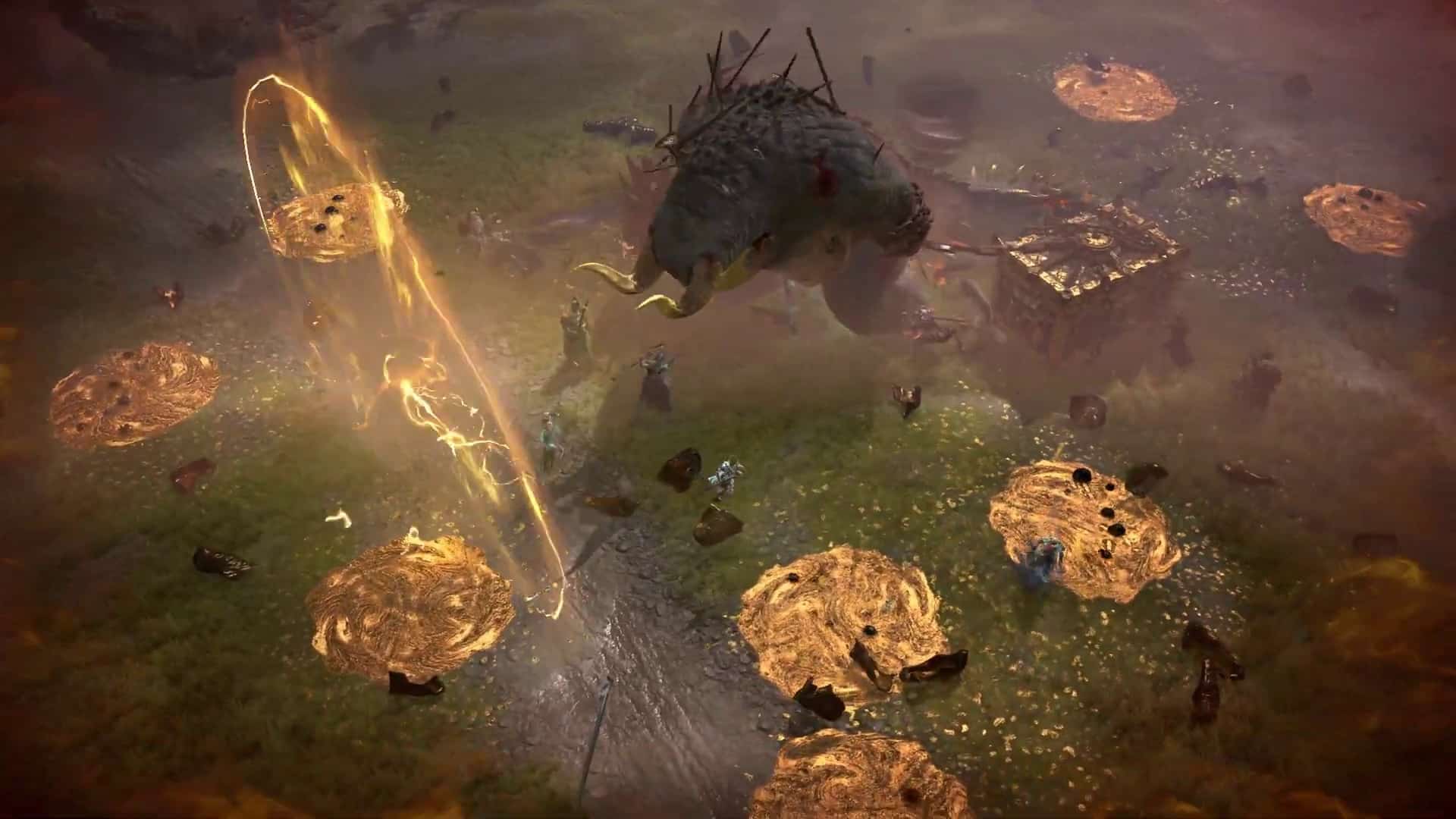
Coop or PvP: How does the multiplayer work?
PvP: Blizzard is planning its own PvP areas. There you earn special hate shards, which in turn act as currency for special items. However, you cannot earn the best endgame loot here. These zones are even explained in the story. They are areas where Mephisto”s hatred rises to the surface and makes heroes more aggressive.
If you play particularly aggressively, slay many other players in PvP and steal their shards, you will eventually become a vessel of hate. You will then be visible to all other players for a period of time and a bounty will be placed on your head. If you withstand the following attacks without running away, you will get a big reward. As in Diablo 2, you will also receive ears from the players you kill in PvP.
Co-op: You can still enter dungeons with a party of friends – or alone if you prefer. Pure co-op skills are not currently planned. However, there may be synergies between the classes.
Story: Who is Lilith and what is it about?
We can say very little about the story at the moment. Only the rough initial situation is known. According to this, even decades after Diablo 3, the world of Sanctuary has not yet recovered from the bloody campaign of the Angel of Death Malthael (Reaper of Souls). Moreover, High Heaven has sealed itself off from humanity.
To make matters worse, the daughter of the great evil Mephisto returns. Lilith may have once created Sanctuary and humanity, but was banished to the Void due to various intrigues. Now she”s back, and arguably she”s stepping up as the big antagonist. What her plans are, we don”t know.
Price: How much does it cost and is there a shop?
Diablo 4 will be released as a full price game. However, it doesn”t stop at this one monetisation. Since Diablo is usually played by its fans for years, the fourth part is to be supported regularly as a service game. This also includes additional microtransactions. However, Blizzard emphasises that you cannot buy gameplay advantages.
The following payment models can be found in Diablo 4:
- Full price: You will be able to buy Diablo 4 as normal. What the game will cost is still unknown. We expect it to be over 50 euros.
- Ingame Shop: Diablo 4 offers an ingame shop. Here you can buy new cosmetic items for in-game currency. These are armours or weapons that have no influence on your skills.
- Season Pass: Diablo 4 is supported with quarterly seasons like Diablo 3. Additionally, there is a free Season Pass. However, you can unlock additional rewards when you unlock the Premium Pass. But again, you can only get cosmetic rewards.
Beta: Can you sign up for it?
In the beginning of 2020 there was a little confusion about a possible beta phase for Diablo 4, but so far Blizzard has not announced a date. However, it is now considered certain that there will be a beta sooner or later.
It is now even possible to register for the beta ( on the website). Whether you will then be guaranteed to get in, however, remains a mystery.
Microtransactions: Is there a shop?
Yes, Diablo 4, like every Diablo, is played by many players for a very long time. In order to profit from this, the RPG is supposed to get an ingame shop. However, you will not be able to buy any items in this shop that give you an advantage in the game. Currently, there is only talk of cosmetics. So you will be able to decorate your heroes or their mounts a little with real money.

